West Hartford Street Smart: Vine Hill Road

Audio By Carbonatix
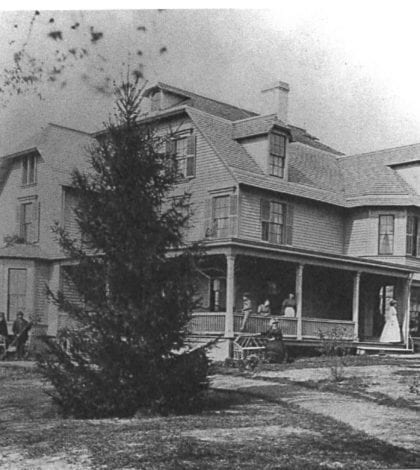
Photographs of the Beach Mansion, ca. 1900. (Collection of the Noah Webster House & West Hartford Historical Society) and the house today.
‘West Hartford Street Smart,’ written by Noah Webster House & West Hartford Historical Society Executive Director Jennifer DiCola Matos, brings to life the history of many of the town’s unique streets and neighborhoods.
By Jennifer DiCola Matos
Vine Hill Road is an Elmwood side street that curves from New Britain Avenue to Mayflower Street. With the high frequency of New Britain Avenue traffic, this tiny road most often goes unnoticed. But in its name is a reminder of the farm that once dominated the landscape of this portion of West Hartford: the Vine Hill Farm owned by the Beach family.
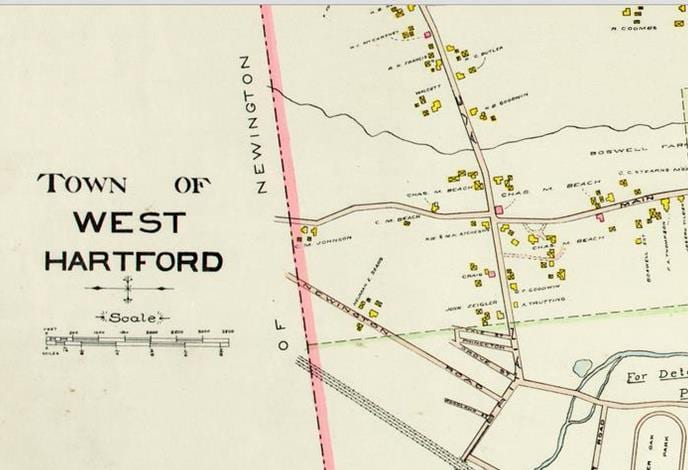
Map of West Hartford, 1909, showing Charles M. Beach’s extensive property. (Collection of the Noah Webster House & West Hartford Historical Society)
Charles M. Beach, an owner of Beach Brothers Company, a chemical and dye making company in Hartford, bought land in the southern part of West Hartford for a summer retreat in 1859. Over time, Beach amassed a huge amount of land by buying out six farms on the four corners of New Britain Avenue and South Main Street.
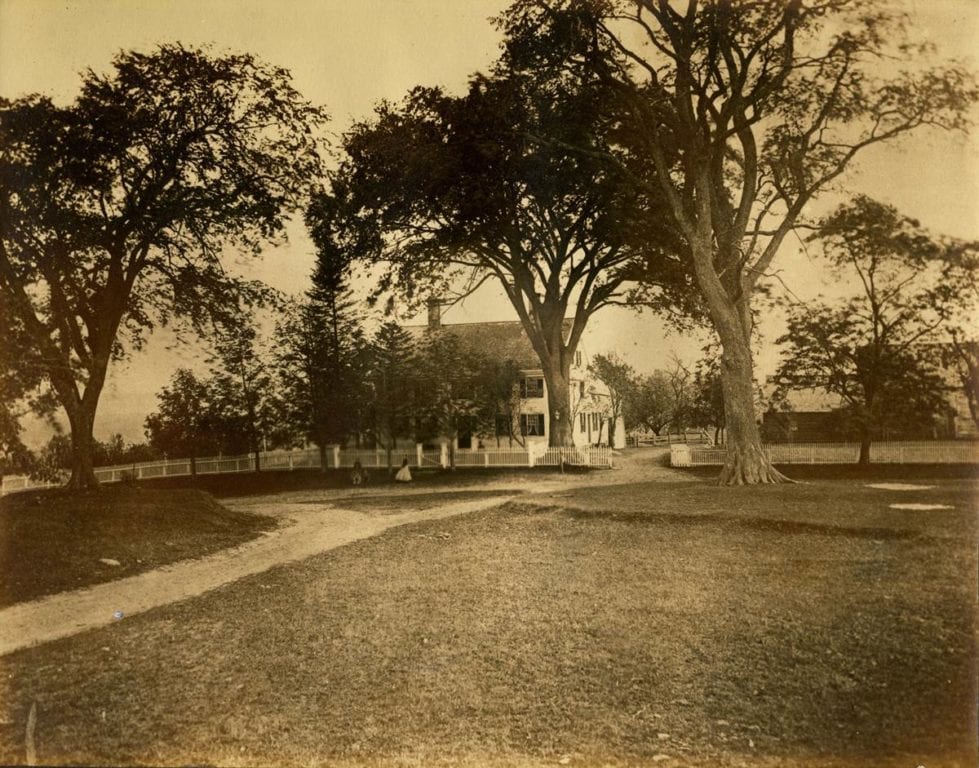
Image of what is today the Sarah Whitman Hooker House. During the days of Vine Hill Farm, the house served as a boarding house for farm workers. (Collection of the Noah Webster House & West Hartford Historical Society)
The substantial dairy farm he established on the land, Vine Hill Farm, ran the whole way to Trout Brook and a creamery was built on the east end of the property (today Beachland Park). At its height prior to World War I, more than 30 men worked at Vine Hill Farm taking care of the cows and the 12 work horses, working the grist mill, bottling milk, making cream and butter, cutting ice from the pond, or working in the blacksmith shop. Many of these men boarded in what is now the Sarah Whitman Hooker House museum on New Britain Avenue, which was part of the Beach’s property.
Since Charles M. Beach was occupied with his primary business, he hired a German immigrant named Louis Stadtmueller to help run the hobby farm. Stadtmueller is credited with planting vines on the property that gave the farm its name.
When Beach’s son Charles E. Beach came of age and took over management of Vine Hill, he hired Stadtmueller’s son, Frank H. Stadtmueller, a recent Yale graduate, in 1885 to run the farm. Stadtmueller perfected a process for preserving milk for two to three weeks and is recognized as the originator and promoter of the certified milk business in Connecticut. Under his leadership, Vine Hill Farm’s herd of 200 high-grade cows produced a superior grade “baby’s milk” that was shipped in bottles by train all over the country and gave Vine Hill its reputation as one of the most prominent dairying enterprises of its time.
Stadtmueller’s genius in the dairy business was officially recognized in 1907, when Governor Simeon E. Baldwin appointed him State Dairy Commissioner – a position Stadtmueller held until his death.
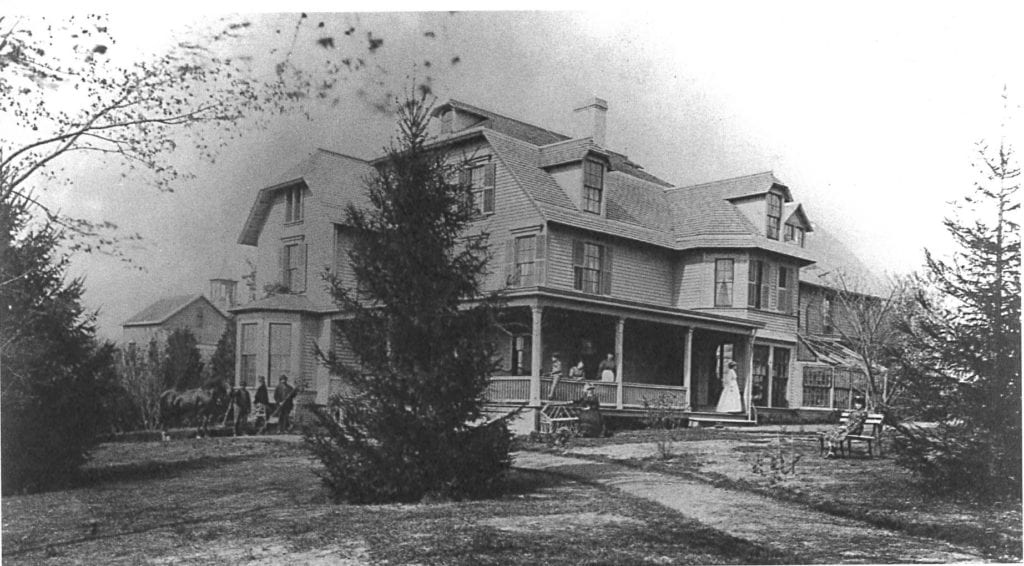
Photographs of the Beach Mansion, ca. 1900. (Collection of the Noah Webster House & West Hartford Historical Society)
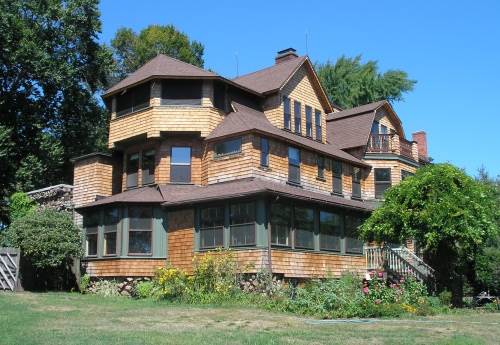
Photographs of the Beach Mansion today. (Collection of the Noah Webster House & West Hartford Historical Society)
The Beach family had established very fine living quarters in a home on South Main Street, as evidenced by existing watercolors done by daughter Frances Antoinette Beach in 1878, now in the collection of Historic New England. In 1900, the Charles E. Beach family built an 8,000 square foot mansion on the hill on the east side of South Main St., just northeast of New Britain Ave. (today 18 Brightwood Lane).
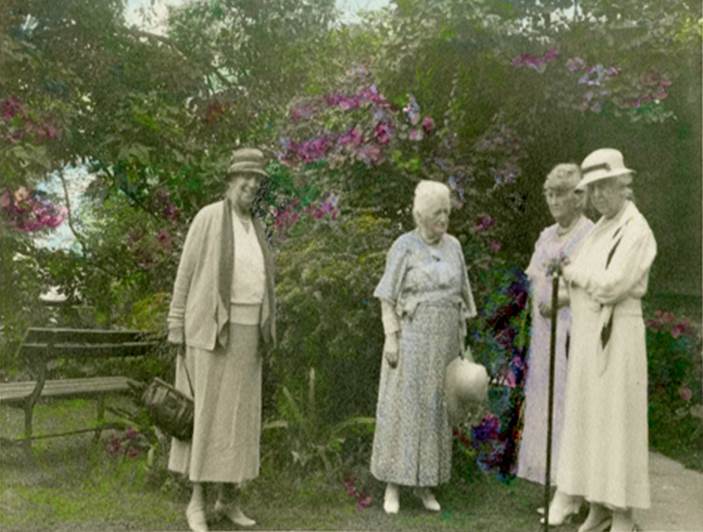
Photograph of the Beach Sisters, ca. 1925. (Collection of the Noah Webster House & West Hartford Historical Society)
According to a 1910 census record, Charles E. Beach lived in the home with his two sons, sisters Mary, Frances, and Edith, one Irish servant and one German servant. During World War I, the Beach family was very involved in the war effort: Charles E. Beach headed the Red Cross and his sisters held fundraisers and Liberty Loan drives, like a French Market they hosted on the farm that drew 1,000 people.
After Charles M. Beach’s death in 1910 and the turbulent years proceeding World War I, production on the farm declined. Farm hands became factory workers and Bloomfield’s Woodford Farm took over as a leading producer of baby’s milk.
As the Beach sisters aged and farm declined, sections of Vine Hill Farm were sold. The largest part – some 30 acres – was given to the Town of West Hartford by the Beach family to create Beachland Park in 1932.
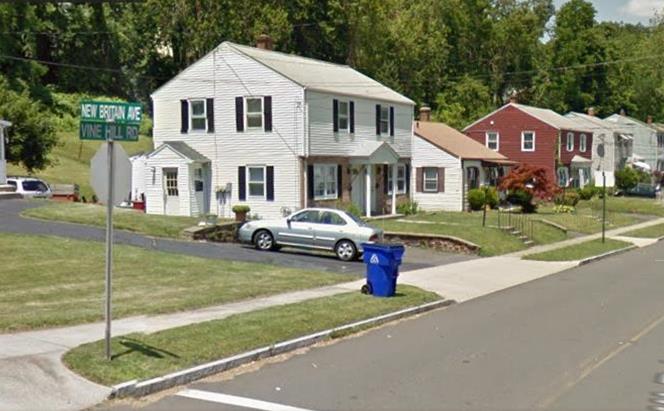
Photograph of Vine Hill Road & New Britain Avenue from today. (Google Earth)
The land that is now Vine Hill Road was developed in its entirety in 1943. In the 1940s, West Hartford experienced a growth in the development of affordable housing with smaller lots to accommodate factory workers that had come to West Hartford’s Elmwood section during World War II. The majority of the houses on Vine Hill Road are duplexes and the fact that nearly 20 houses were completed in the same year is testament to the efficiency standardized housing construction had attained.
A special thanks to Dr. Tracey Wilson, West Hartford Town Historian, and Sarah St. Germain, for their assistance with this story.
Jennifer DiCola Matos is the Executive Director of the Noah Webster House & West Hartford Historical Society. Her new series “West Hartford Street Smart” pays tribute to the Town’s rich and colorful past. If you have information about the history of West Hartford’s streets, please email her at [email protected].
The Noah Webster House & West Hartford Historical Society is a cultural destination where citizens can learn to understand and appreciate the past. The museum preserves the birthplace of Noah Webster, the founding father, educator, author, and lexicographer who taught generations of Americans what it means to be American. This National Historic Landmark is also a repository for the history of West Hartford, the community that molded Noah Webster’s future, and is still thriving over 250 years later. The historic house and exhibit spaces are open daily 1 p.m. until 4 p.m. For information on the museum’s extensive school and public programs, please visit www.noahwebsterhouse.org, call (860) 521-5362, or follow the museum on Facebook and Instagram (NoahWebsterHouse) and Twitter (@NoahWebHouse).
Like what you see here? Click here to subscribe to We-Ha’s newsletter so you’ll always be in the know about what’s happening in West Hartford!



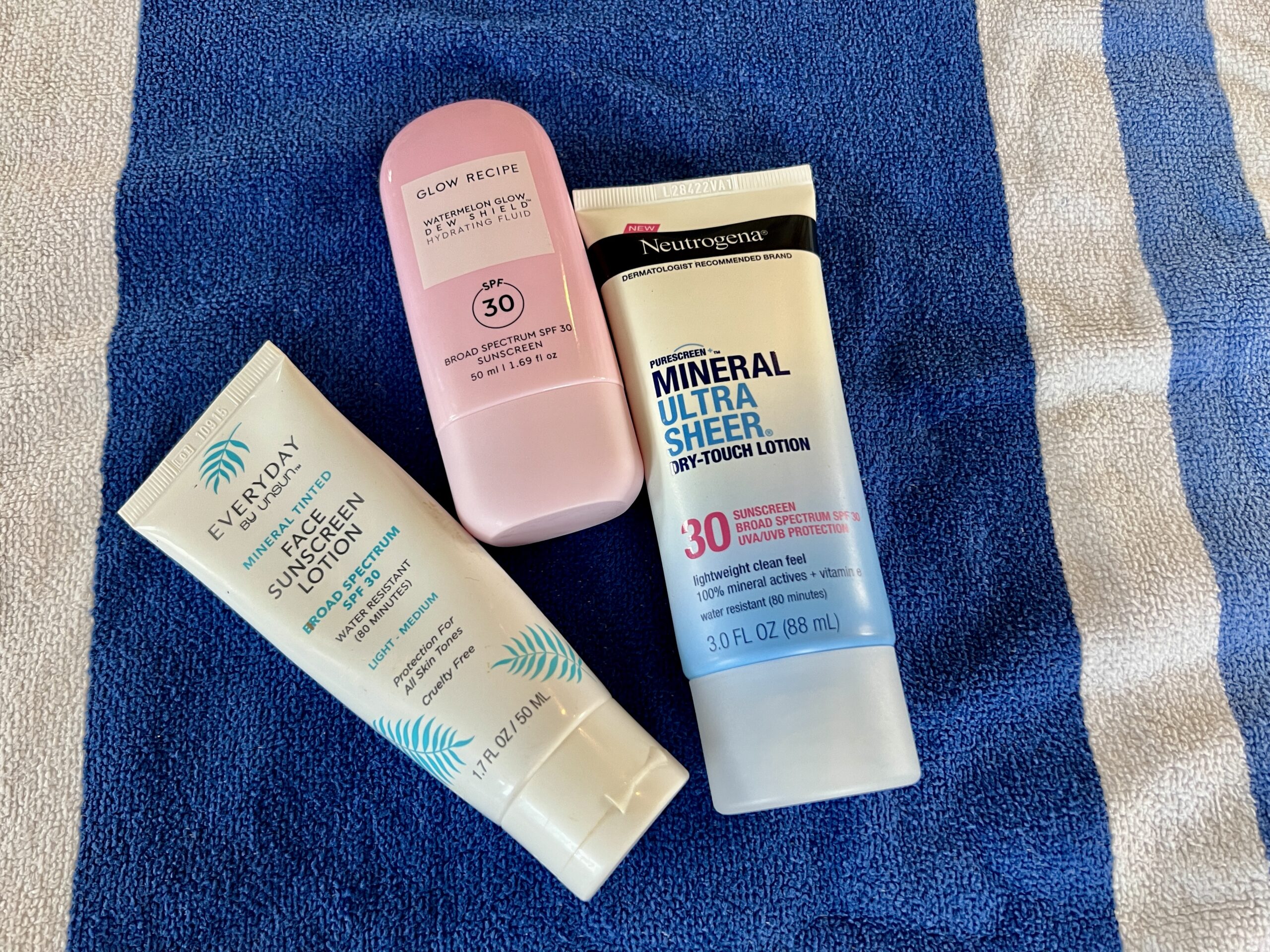
Loved this, loved the pictures! Can’t wait for more!